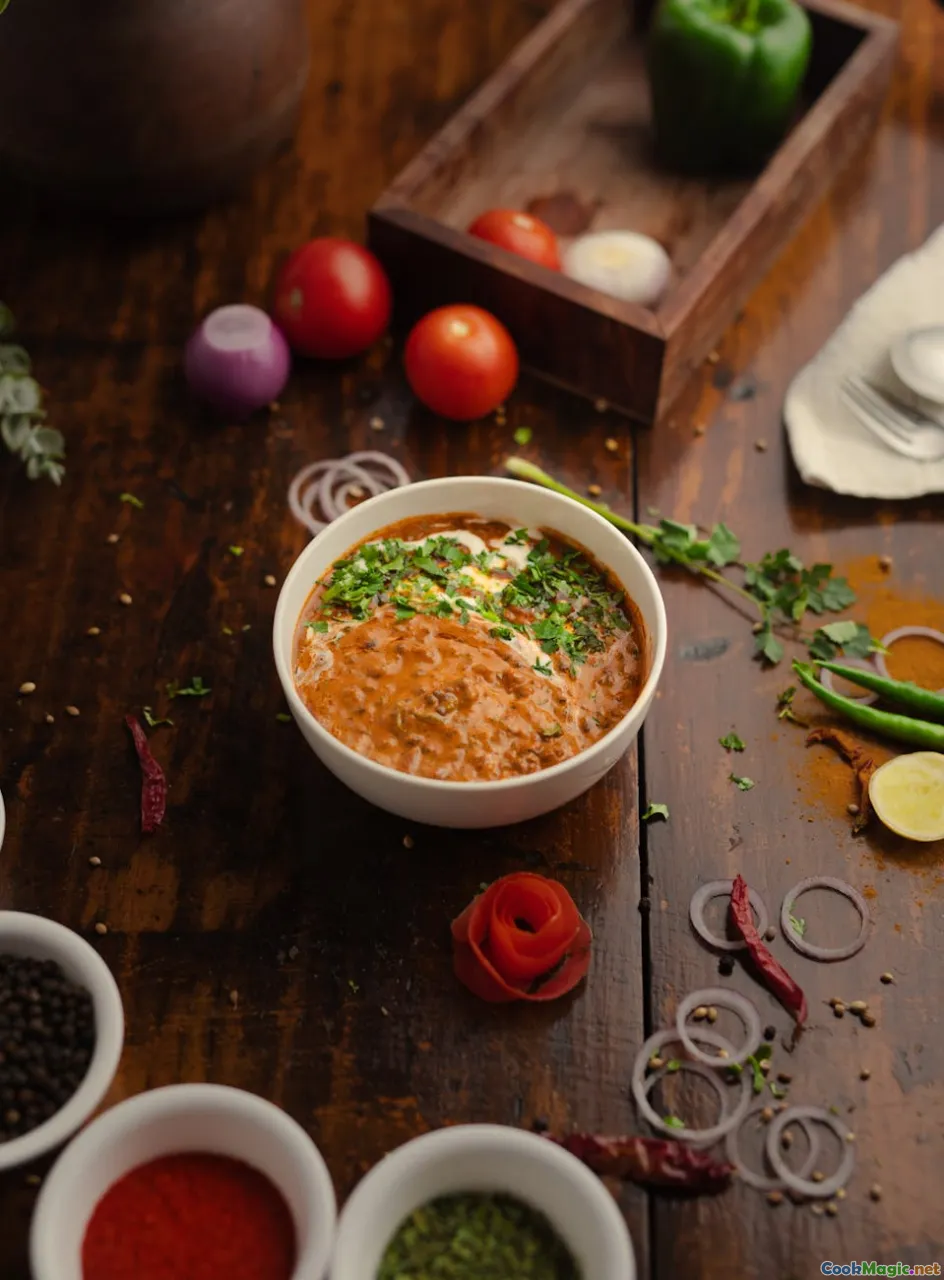Secrets to Slow Cooking Authentic Indian Dal
7 min read Unlock the art of slow cooking to craft rich, flavorful, and authentic Indian dal that embodies tradition and depth with every bite. June 09, 2025 18:01
Secrets to Slow Cooking Authentic Indian Dal
Introduction: The Soul of Indian Comfort Food
Imagine walking into a bustling Indian kitchen at dusk. The air is thick with the aroma of spices—fragrant cumin, earthy turmeric, and the warmth of freshly roasted garlic. In the corner, a large clay pot simmers gently, releasing a comforting, golden-brown steam. This is not just food; it's a ritual, a tradition passed down through generations.
Indian dal—an everyday staple for millions—is more than just a lentil stew. It embodies history, culture, and the soul of Indian hospitality. Its complex flavors, velvety texture, and aromatic depth are often achieved through slow cooking techniques that transform humble legumes into a culinary masterpiece. Today, I invite you to explore the secrets behind slow-cooking authentic Indian dal—techniques that elevate this humble dish into something extraordinary.
The Cultural Significance of Dal
A Staple Rooted in Tradition
Dal, in its many regional varieties, forms the backbone of Indian cuisine. It’s a dish accessible to all, transcending socio-economic barriers, and rooted in ancient traditions. In villages and cities alike, families gather around their stoves, patiently simmering lentils for hours, infusing them with spices and love.
Spiritual Connection
In many Indian households, dal isn’t just nourishment; it’s a spiritual act. The slow process allows for mindfulness, patience, and respect for the ingredients. It’s a culinary meditation—each stir and simmer a testament to devotion.
Historical Roots and Regional Variations
Origins and Evolution
Historically, dal has been a vital part of Indian sustenance for thousands of years. Archaeological evidence suggests lentil cultivation dates back to the Indus Valley Civilization, where legumes were a key protein source.
Regional Flavors and Techniques
From the creamy, coconut-infused Dal Tadka of Punjab to the spicy, tangy sambar of South India, regional variations showcase the diversity of Indian dal. Yet, the core principle remains: patience in cooking yields depth of flavor.
The Science and Art of Slow Cooking Dal
Why Slow Cooking Matters
Slow cooking allows flavors to meld harmoniously, textures to soften perfectly, and spices to unlock their full potential. Unlike quick methods, slow simmering develops a rich, complex profile, transforming tough legumes into tender, melt-in-the-mouth bites.
The Chemistry Behind the Transformation
As lentils gently cook, their starches gelatinize, creating a velvety sauce. The heat activates enzymes that break down complex sugars, reducing gas and bloating. Spices release essential oils, infusing the dish with aromatic layers.
Step-by-Step Guide to Perfecting Slow-Cooked Dal
Choosing the Right Lentils
Different lentils yield different textures and flavors:
- Toor Dal (Pigeon Peas): Creamy, soft, and perfect for classic dals.
- Moong Dal: Mild and quick to cook, ideal for light, digestible dishes.
- Masoor Dal: Deep red, earthy flavor, cooks quickly yet develops rich taste.
Soaking for Better Results
While not always mandatory, soaking lentils for 30 minutes to 2 hours reduces cooking time, enhances digestibility, and ensures a smoother texture.
The Art of Tempering (Tadka)
A key step that infuses flavor:
- Heat oil or ghee in a small pan.
- Add cumin seeds, mustard seeds, or dried red chilies.
- Once fragrant, add garlic, ginger, and onions.
- Pour over the simmering dal to create a layered flavor profile.
Slow Cooking Techniques
- Stovetop: Use a heavy-bottomed pot for even heat distribution. Maintain a gentle simmer, partially covered.
- Slow Cooker: Ideal for hands-off cooking; set on low for 4-6 hours.
- Dum Cooking: A traditional method where the dal is cooked over very low heat, often sealed with dough or cloth.
Key Tips for Success
- Use fresh spices for vibrant flavors.
- Keep an eye on the consistency; dal should be thick yet pourable.
- Adjust seasoning at the end to balance flavors.
- Add a squeeze of lemon or a sprinkle of fresh coriander before serving.
Personal Insights and Tips
My grandmother’s secret was always to start with freshly cracked spices and to cook the dal slowly, allowing the flavors to develop naturally. She believed patience was the key—an hour or two of gentle simmering turned simple lentils into a soulful dish.
I’ve also learned that the quality of water matters. Using filtered or mineral water ensures purity of taste. And never rush the process—embrace the slow burn, and you'll be rewarded with a dal that’s rich, comforting, and deeply satisfying.
Pairings and Serving Suggestions
- Serve hot with fluffy basmati rice or Indian bread like chapati or naan.
- Accompany with a side of pickles, yogurt, or a fresh salad.
- Garnish with chopped cilantro and a drizzle of ghee for added richness.
Final Reflections: The Joy of Slow Cooking
Cooking dal slowly isn’t just about technique; it’s about honoring tradition, patience, and love. Each spoonful tells a story of generations, of festivals and family gatherings, of quiet evenings and hearty conversations.
So next time you’re craving something warm and soulful, remember: the secret to an authentic Indian dal lies in the slow, gentle embrace of time. Let your kitchen become a sanctuary for this ancient art, and enjoy the delicious rewards of patience.
Embark on your slow-cooking journey today and discover how patience transforms humble lentils into a dish that nourishes both body and soul. Happy cooking!









